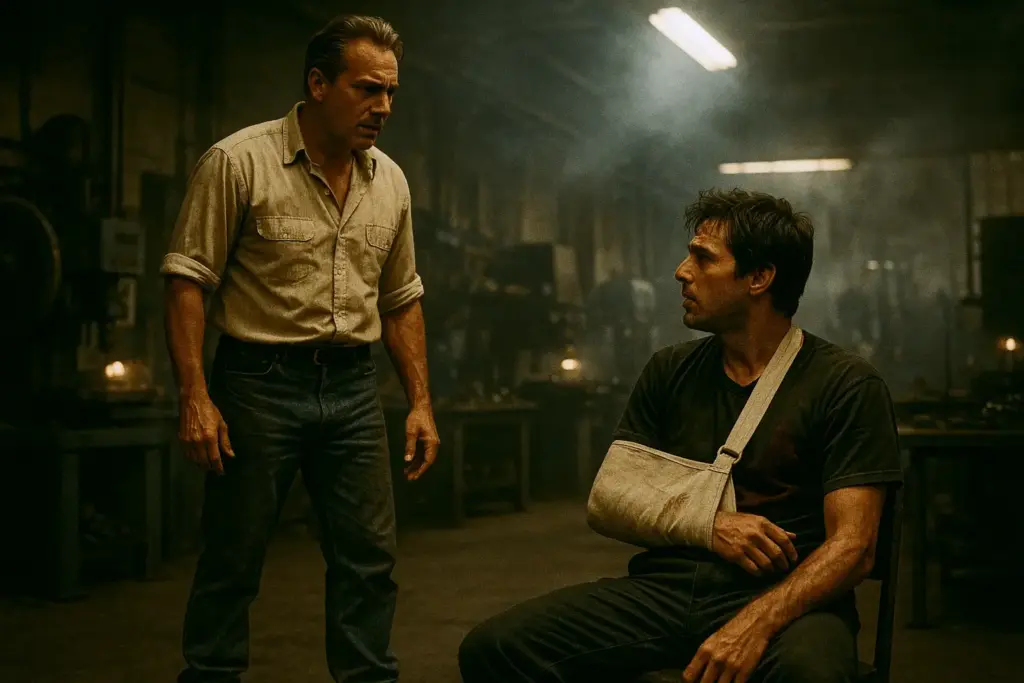The First 24 Hours Matter Most

Here’s a cold truth: the way you handle post-injury workers comp support in the first 24 hours says more about your business than any safety slogan on the breakroom wall.
The injury itself? That’s just the starting line. What comes next, the scramble of paperwork, the awkward team meetings, the “how bad is it?” questions, that’s where most business owners either build trust or quietly lose it. You’re not just managing a claim; you’re juggling real human emotions, legal deadlines, and the financial future of your company.
A lot of folks treat workers comp like a fire extinguisher: break glass in case of emergency, then hope for the best. But that mindset? It’s costing you. Supporting an injured employee isn’t just about being the “nice boss.” It’s about avoiding lawsuits, controlling premium hikes, and keeping your team from spiraling into resentment and fear.
This post isn’t about checking boxes. It’s about using post-injury workers comp support as a tool to protect your people and your business, without burning yourself out in the process.
Post-Injury Workers Comp Support Starts with Empathy
When someone on your team gets hurt, it doesn’t just hit one person, it hits everyone. The shop feels quieter. Conversations get weird. Your foreman is suddenly acting like an HR rep, and half the team is whispering about what “really” happened.
Here’s what most business owners miss: post-injury workers comp support begins long before the paperwork. It starts with how you talk to your team, and more importantly, how you treat the person who got hurt.
If your first move is to question the injury or push for productivity, the message is clear: “You’re a liability now.” That mindset spreads fast. It makes your people feel disposable. And when employees don’t trust you to have their back? Productivity drops, morale craters, and good workers start checking job boards.
Instead, use the moment to build trust. Visit the employee (if appropriate). Ask how they’re doing, not just what the doctor said. Keep them in the loop about what comes next, even if it’s complicated. The goal here isn’t just damage control; it’s loyalty-building. When people feel seen and heard after an injury, they’re more likely to stick with you, and less likely to lawyer up.
This is where strong post-injury workers comp support becomes a business advantage. It’s not about sympathy. It’s about strategy: protecting your culture while keeping your team focused and confident. Because nothing tanks productivity faster than fear.
Protecting Your Business Through Smart Post-Injury Workers Comp Support
Here’s where things get messy. You’ve got an injured employee, a stressed-out team, and now, surprise, you’re knee-deep in paperwork that reads like a legal thriller.
The truth is, post-injury workers comp support isn’t just about helping the person who got hurt. It’s also about covering your own backside. One missed deadline or poorly worded email can open the door to serious consequences, penalties, lawsuits, or a premium spike that haunts your balance sheet for years.
A lot of busy owners think, “I pay my premiums, the carrier handles the rest.” Not quite. Insurance companies don’t hand out gold stars for being reactive. They’re watching how fast you report, how clear your documentation is, and whether you’re keeping in touch with the injured worker. If it looks sloppy or inconsistent, you lose credibility, and potentially, your rate class.
This is why a clear, repeatable process matters. Assign a point person. Document everything, what happened, when, who said what. Keep communication open, but professional. And stay consistent. If one employee gets all the check-ins and another gets ghosted, you could be looking at a discrimination claim.
Solid post-injury workers comp support means playing both offense and defense. You’re showing the employee they matter while building a paper trail that protects your business if things go sideways. It’s not about being paranoid, it’s about being smart. Because when it comes to claims, the system rewards the businesses that stay one step ahead.
Balancing Recovery and Operations with Post-Injury Workers Comp Support
Here’s the part no one tells you: your injured employee probably wants to come back to work, but they’re worried they’ll be pushed too hard, too soon.
At the same time, you’re trying to keep operations moving without overloading your already stretched crew. That’s where modified duty becomes your secret weapon. Smart post-injury workers comp support includes a plan that brings people back in a way that makes sense for everyone.
Light duty isn’t just busy work. It’s a chance to rebuild trust, show the team that safety is real, and avoid long-term claims that spiral into permanent disability status. Think beyond the job description, can they answer phones, help with inventory, update records, or train new hires? You’re not punishing them; you’re protecting their role in the company.
The key? Ask them what they feel up for. Don’t assume. Involve their doctor if needed. When you collaborate on the return-to-work plan, you shift the dynamic. It’s not “We need you back ASAP,” it’s “Let’s figure out what works for now.”
This kind of post-injury workers comp support doesn’t just help the injured employee ease back into their role, it boosts morale for the whole team. It shows you’re adaptable, not just reactive. And it keeps claims from dragging on and draining your resources.
Bottom line: you’re not just filling a schedule. You’re reinforcing a culture that values people, even when they’re not at 100%.
Long-Term Success with Post-Injury Workers Comp Support
Supporting an injured employee isn’t a one-week project, it’s a long game. And here’s where most well-meaning business owners slip up: they either push too hard for a fast return or back off entirely and lose control of the process.
Neither works. Strong post-injury workers comp support means knowing when to push and when to pause. Some employees genuinely need time. Others might benefit from gentle accountability. But if you’re guessing, or worse, avoiding the conversation altogether, you’re risking more than just a claim extension. You’re risking trust, costs, and control.
Watch for signs that things aren’t going well: inconsistent updates, vague excuses, or tension in team dynamics. These don’t automatically mean someone’s gaming the system, but they are signals you need to re-engage. Check in. Stay professional. Keep everything documented. And remember, workers comp isn’t just about healing bones, it’s about managing expectations on both sides.
The most effective companies don’t treat this as a one-size-fits-all situation. They stay flexible but proactive. They communicate without hovering. And they never assume “no news is good news.”
When your post-injury workers comp support plan includes regular follow-ups, adjusted responsibilities, and clear expectations, you set yourself up for smoother claims, stronger loyalty, and far less friction down the line.
This isn’t about being overly cautious, it’s about being in control. And when you stay in control, everybody wins.
It’s Not Just Support, It’s Strategy
An injury on the job can feel like chaos in the moment, but what happens next determines whether it becomes a small setback or a long-term mess. Post-injury workers comp support isn’t just about compassion. It’s a strategic tool to protect your people, your reputation, and your bottom line. When you treat support as a system, not just a gesture, you create a workplace that bounces back faster, with fewer surprises and stronger loyalty. If you want coverage that’s built for real-world situations like these, it might be time to take a closer look at your Workers Compensation Insurance. Because the best time to prepare for an injury… is before it happens.
